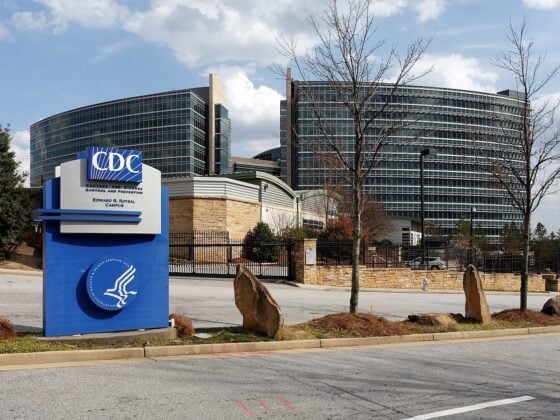Whether you’re seeking routine medical care, making an unexpected trip to the emergency room, or getting treatment for a serious illness, it’s common to encounter unfamiliar words, intimidating procedures or tests, and possibly having to see a specialist. It takes a lot to keep up with everything the doctors and other health professionals tell you, as well as written instructions and research you’ll want to do to better understand what’s going on with your health. The ability to gain and understand healthcare information is known as health literacy, and October is recognized as Health Literacy Month.
An Investment in Good Health
Health literacy affects more than people with limited reading and comprehension skills. Health problems can be scary and confusing, causing even the most literate person to have difficulty following the steps required to get well. This is particularly true for seniors and people living with chronic conditions who often have more complicated care regimens.
Health literacy also includes access to accurate information. For example, a fact-based explanation from a doctor or nurse that the flu vaccine reduces instances of pneumonia and death for seniors is much better than relying on questionable internet information.
According to research from UnitedHealth Group, improving health literacy can prevent nearly 1 million avoidable hospital visits and save over $25 billion a year in associated costs.
According to research from UnitedHealth Group, improving health literacy can prevent nearly 1 million avoidable hospital visits and save over $25 billion a year in associated costs. The same 2020 report finds that medical costs are 13% lower for people on Medicare living in areas where health literacy is high compared to those living in areas where health literacy is low.
The best medical care isn’t always about getting more treatment or drugs, and being health literate means you know where to turn for information to make the best choices. Appropriate drugs, for example, can provide relief and even reverse the progression of illness, but overuse of drugs, particularly opioids, can cause addiction and other health problems. A health literate person may be better prepared to ask questions when prescribed narcotics for pain management.
Two-way Street
Effective communication is essential to achieving good health outcomes, and medical professionals and patients need to work together to get the job done. All parties have to prioritize understanding, and that can take many forms. Communication is affected by language, culture and the difficulty associated with understanding complex medical conditions. Speaking in plain language, giving clear instructions and offering resources that address a patient’s total health are steps that medical professionals can take to increase health literacy.
Meanwhile, patients can come to appointments prepared with a list of their top concerns and current medications. It’s also important to communicate honestly and fully, and repeat back to the doctor your understanding of your medical condition and what you’re being asked to do about it. Nurses are taught to use the repeat back technique when communicating with doctors. It’s called a “teach-back” moment, and it saves a lot of misunderstanding.
Drop the Medicalese Please
Take a look at the two paragraphs below and evaluate which one is most easily understood.
The prognosis for the neoplasms found in the patient’s abdomen is complicated due to comorbidities, including a previous myocardial infarction and hypertension. Introducing a new drug regimen requires careful assessment to avoid contraindicated treatment for these comorbidities.
The expected outcome of treatment on the new growths found in the patient’s stomach is complicated by other medical conditions, including a previous heart attack and high blood pressure. It’s important to make sure that any new drugs don’t worsen the medical conditions the patient is already experiencing.
Not every communication from a health professional will sound as foreign as the first paragraph, but their training requires familiarity with medical terminology and an alphabet soup of abbreviations. They may slip into those terms naturally. Don’t hesitate to say you don’t understand a word or entire explanation. Most doctors welcome questions — it shows you want to be engaged in your care — so there’s no need to worry that you’re asking a “dumb question.”
Language and Culture
Information conveyed in plain English is fine — if your first language is English. The Affordable Care Act (ACA) includes provisions to accommodate individuals with limited English proficiency, including a translator or written translation. It’s best to check ahead to make sure language assistance is available, or get a referral to a provider offering the language you speak.
Communication is also affected by class, culture and lifestyle. Being talked down to can be just as frustrating as not understanding technical medical terms. Some people may feel more comfortable with a health professional of the same gender. Nonjudgmental acceptance of sexual identities will be an important factor to some patients. Medical training increasingly includes awareness of these social influences on successful treatment. Respectfully making your needs known and seeking out those who address these needs can help the process.
Remember That We’re All Human
A hospital stay or doctor visit can bring lots of emotions to the surface as people often feel afraid or worried about what’s being done to them. While doctors and nurses are used to seeing illness and disease, they too are impacted by emotional strains and demands of their job. This mix of emotions can create an inhospitable environment for effective communication, and health professionals and patients can be well served by taking a step back and thinking about what’s really being expressed.
A patient’s fears are best handled by openly addressing them, and that requires a combination of medical expertise and empathy. But a doctor’s bedside manner will be tested if a patient behaves confrontationally, poses hostile questions or quickly threatens to sue. When everyone acknowledges humanity in the other, real communication is possible. It can be as simple as saying, “I’m worried that we aren’t communicating well. Here’s why I feel that way.”
The Time Squeeze
When you’re sitting in a waiting room, stewing about the length of time it’s taking to see the doctor, remember that the doctor is probably equally frustrated by mountains of record keeping and a push to see more patients in less amounts of time. These time constraints indeed test good communication efforts. That’s why it’s important for patients to come prepared with their medications list and notes about their top health concerns. Jotting down questions ahead of your appointment will help you stay focused once you start talking with the doctor. It’s easy for the conversation to get off-track into other areas. Perhaps the conversation needs to delve into areas you hadn’t thought about, but your notes can help you circle back to make sure your original concerns are covered.
Resources to learn more
The information you get from health professionals isn’t the only way to increase health literacy, though it’s critical that you get health information from credible sources. The urge to “Google it” can provide useful information if you stick to trusted sources that aren’t trying to sell something or promote a point of view. Ask your doctors for trusted sources to help you understand more about a medical condition. If you prefer videos or visual information, state your preferences.
You can also increase your health literacy by accessing information from organizations devoted to the type of medical issue you have, such as the American Heart Association, the National Kidney Foundation or the American Diabetes Association. Some groups will purposely use similar names to official organizations or use an internet address that sounds legitimate, but is not. Look for tell-tale signs such as pushing a certain product or treatment. And the internet isn’t the only resource! Your doctor may suggest local groups that offer classes and other information about managing your care.
Big Payoffs
Increasing health literacy has big payoffs for everyone in the healthcare equation: patients, health professionals and health insurance providers. And perhaps because it affects everyone in healthcare, each constituent group has to do their part for optimal health literacy. At its core, health literacy has a simple goal: Make sure everyone has information they can understand and use to make the best decisions for their health. As with most “simple” things, there are countless steps to getting it right. Health literacy is too important to the success of healthcare to relegate it to a low priority. And every step counts.



